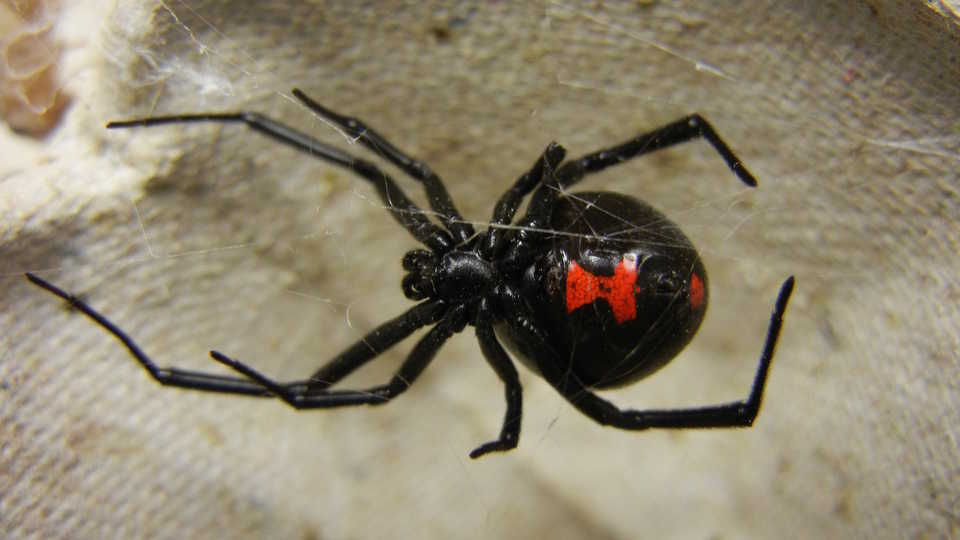Science News
The Color of Spiders

We’ve written about spiders before—their body sensors and their accounting skills, among other things—but we’ve never seen this before. Well, more accurately, spiders haven’t been seen like this before.
It’s well known that colors can communicate serious information. Just ask the brightly-colored dart frogs in our rainforest exhibit: deathly poisonous in the wild, our amphibians in captivity are fed a special diet that keeps our staff and visitors safe from any danger. Aposematic signals, such as the variety of warning colorations found on dart frogs in the tropics, are limited in creatures native to North America, unless you happen to come across a black widow spider—particularly, the adult females. That telltale red hourglass is a big warning sign to stay away, lest ye be bitten.
So why are the belly markings on female black widow spiders red, and not green, blue, or even orange? According to new research by Nick Brandley (while he was a graduate student at Duke University, whereas he is now a biology professor at Colorado College), that warning color may be very specific—to predators, at least. Black widow spiders usually sit upside-down in their webs, advertising their venom to a bird that could turn them into a meal. To find out if this might be true, Nick bought 3D-printed black widow models. With careful use of a paintbrush and a lot of early-morning observations, Brandley was able to track how many times birds pecked at arachnids with and without the telltale markings.
The results were clear: birds preferred the red hourglass-free models by a two-to-one margin. “The birds would see a spider model with red markings and get startled and jump back, like ‘Oh no man, get me out of here,’” notes Brandley. But that’s only half the story. If the hourglass color were different, it might be visible to the spiders’ prey. “Insects can still detect red light, but not as well as mammals or birds,” says Brandley. “Birds typically have a long-wavelength sensitive photoreceptor that most insects lack,” he continues in the paper, referring to colors like red. So while the signal is sending strong messages to birds (and humans) to please stay away, I am dangerous, it’s sending no signal at all to insects, while a different color of a shorter wavelength might be seen by both. Because of the differences in eye physiology between predator and prey, natural selection has created a spider that can be safe from predators without scaring off a future meal.
Image: Lactrodectus female, Shenrich91/Wikipedia